Sticky Traps- Organically Controlling Pests in the Garden
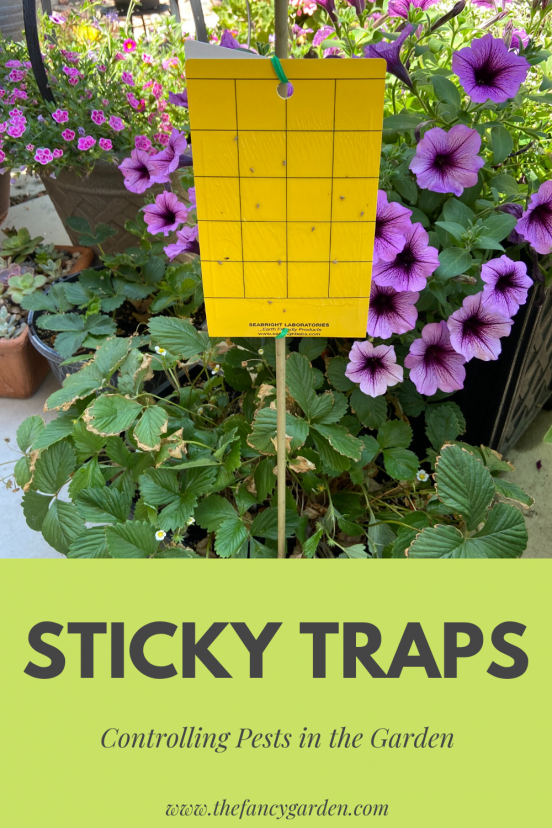
If you are searching for an organic control for pests in the garden such as leafhoppers and thrips, insect sticky traps are a great option to consider.
Disclaimer: when you shop through my affiliate links I earn a small commission which helps me create more content, at no additional cost to you! Thank you so much for your support!
Are leafhoppers swarming your sunflowers, tomatoes, and dahlias? Do you go to take a whiff of a wonderfully fragrant rose only to find your nose is full of thrips and you are now sneezing them out everywhere (yes this has actually happened to me)? Want a pest control option that has a low impact on beneficial insects? Then you NEED to try insect sticky traps.
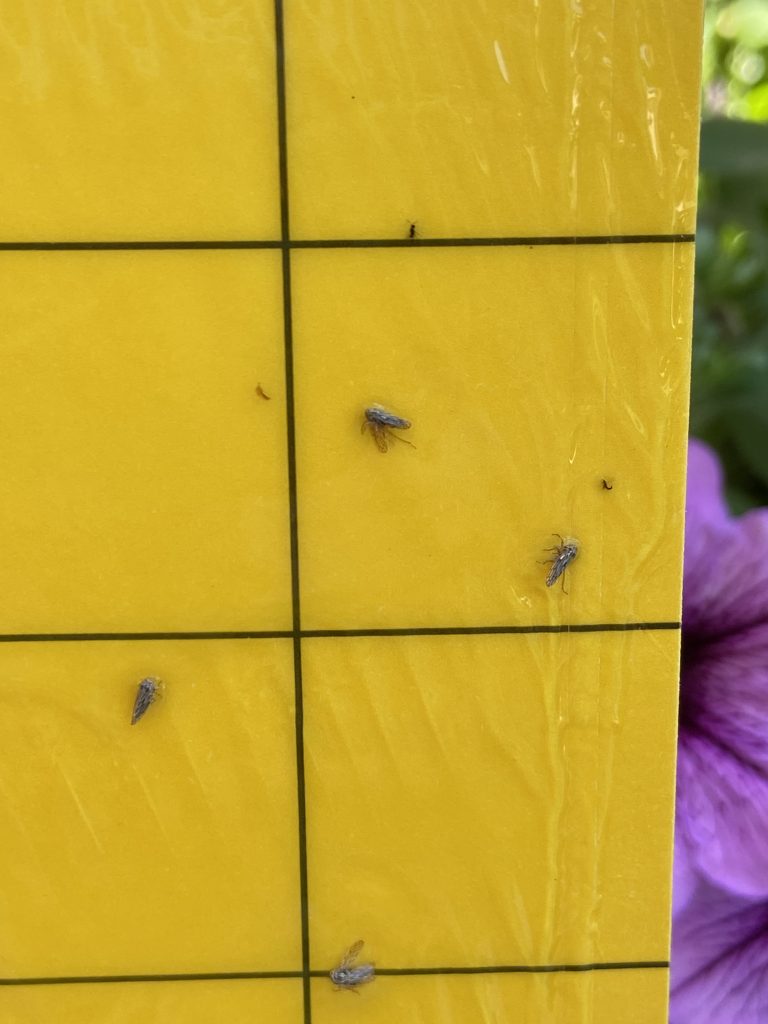
Sticky Trap Basics
Insect sticky traps come in yellow and blue. They are made with a colored piece of cardstock coated with a sticky substance that resists water and can be left out in the garden until it is full of insects. Thrips love blue traps. Leafhoppers love yellow traps. If you have both pests in your garden but are just wanting to purchase one color I recommend the yellow traps. Leafhoppers are not very attracted to the blue traps, but you can catch both leafhoppers and thrips on the yellow traps. The insect sticky traps will also trap whitefly and aphids.
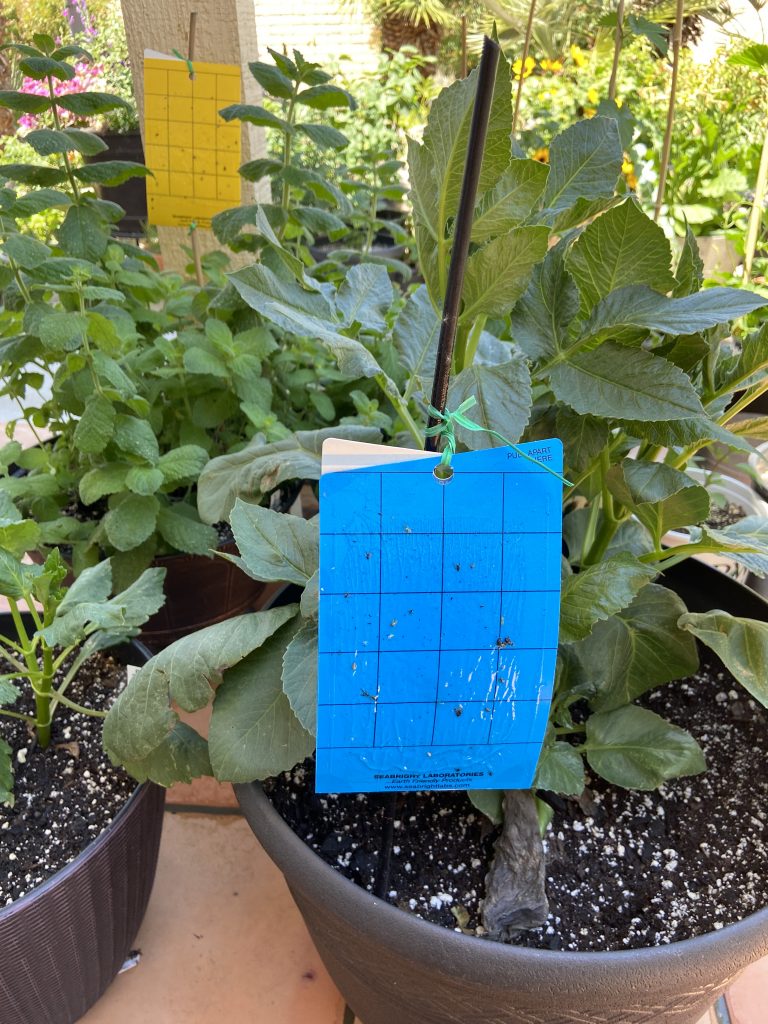
In my experience insects start getting caught on the traps fairly quickly, sometimes in a matter of minutes depending on how bad the infestation is. The trap in the photo below was in place for four days. It is very exciting to see these terrible pests get caught on the traps (at least it is for me haha).
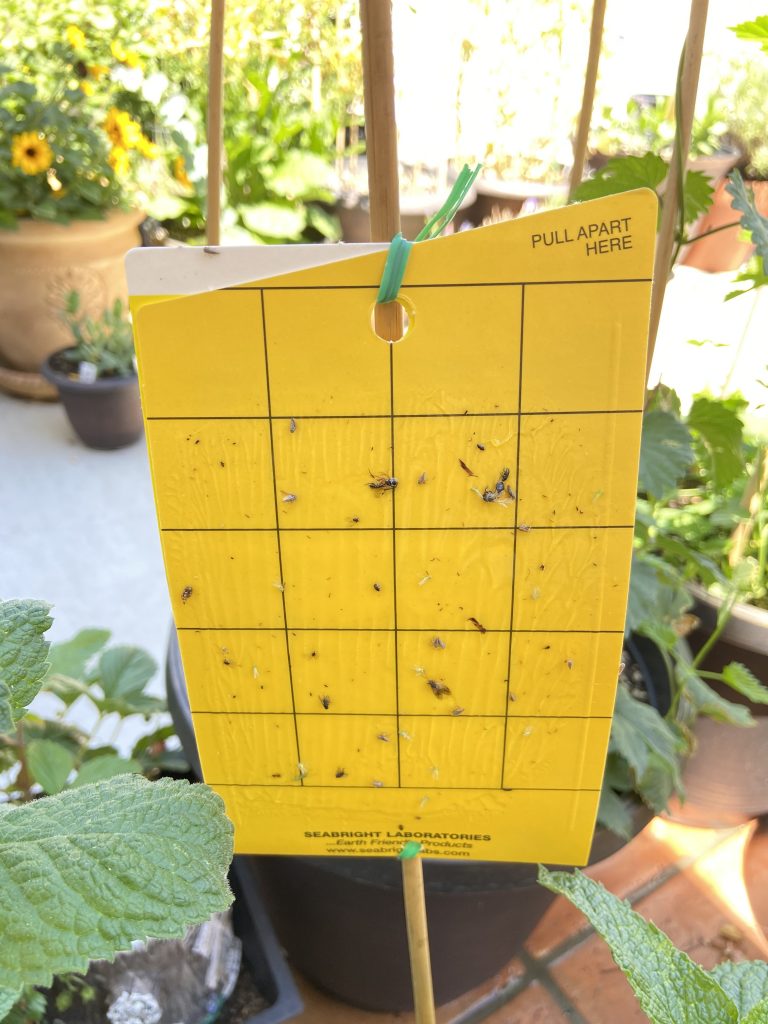
The Risk to Beneficial Insects
If you are wondering if beneficial insects will get caught on insect sticky traps the answer is yes. On occasion a lacewing or beneficial fly becomes trapped, but the benefits of catching so many bad bugs outweighs this con. I have also read that the traps can ensnare a bird but I have never experienced this myself.
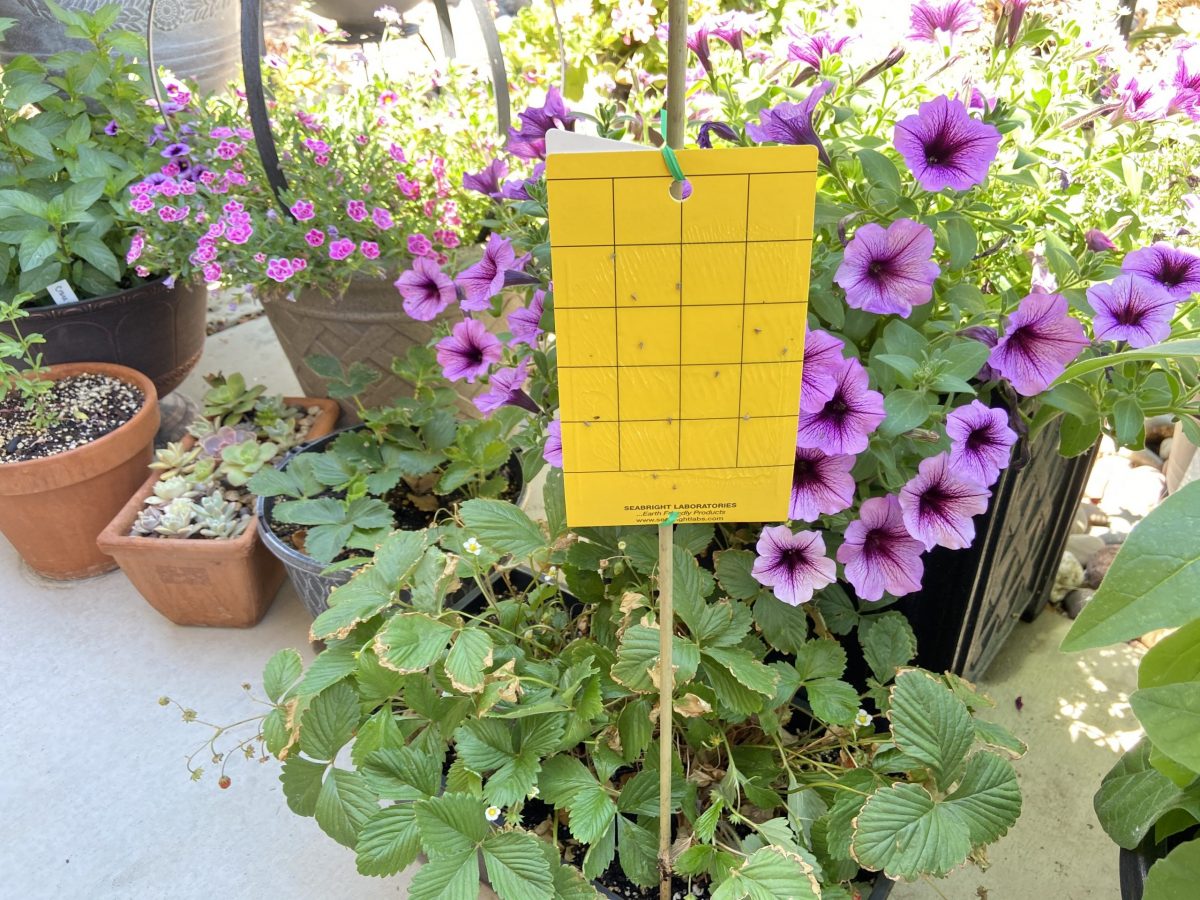
Sticky Trap Set-up
Setting up your sticky trap is super simple! Basically all you need is a bamboo cane. I also use a hole punch to add a hole in the bottom of the trap so I can secure it by the top and the bottom with the twist tie that is included. Securing it at the top only leaves it open to flapping around in the wind getting sticky stuff everywhere. By the way- try not to touch the sticky substance because it will be difficult to clean off your hands. The canes will become quite sticky where the traps are attached so you will not be able to use them for any other purpose.
Stick the traps down among your plants making sure that leaves will not come in contact with the trap. I like to shake the plant a few times to agitate the insects and get them to jump off the plant and into the trap sooner. This is also a good practice to do in the evening when you are walking about in the garden.
Final Thoughts
It is true that the traps are unsightly. It is a small price to pay when you realize that for every insect that you trap you are preventing it from breeding hundreds more babies. When guests come over to the garden it is easy to pull out the canes with their traps still attached and hide them in your garage or shed.
Thank you for reading and I hope that you will give insect sticky traps a try! If you are dealing with that other huge pest in the garden – BUDWORMS – check out THIS POST! Please let me know down in the comments if you have ever tried them or are planning to! And don’t forget to check out my Instagram for daily gardening adventures.
Happy Gardening!
Heather
Related Posts
How to Stop Budworms from Eating Your Flowers
I have a confession to make. I’ve been a bad plant mama…
11/07/2018


Jen | 15th Aug 21
If you monitor these closely they could work well but I have encountered a chickadee and a small brown bat stuck to them. Both of the animals had to be humanely euthanized. The chickadee had every piece of every feather stuck to the sticky- it was going for a wasp that was stuck. The bat was safely removed but died in rehabber care because of the stress. I am all for natural alternatives to chemicals and sprays but be careful using stickies!
Heather | 17th Aug 21
Jen that is tragic!! Thank you for the words of caution!